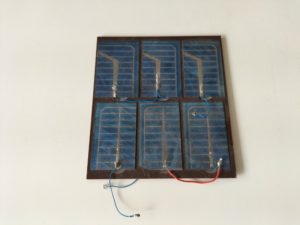Biologisch abbaubar oder recycelbar: Materialien mit niedrigem Kohlenstoffgehalt sind Materialien mit einem geringen CO2-Fußabdruck* und geringen Umweltauswirkungen. Sie werden in der Regel aus natürlichen (organischen oder mineralischen) Ressourcen gewonnen. Man unterscheidet zwischen biobasierten Materialien, die aus Biomasse gewonnen werden, wie z. B. Holz, Hanf, Stroh, Schafwolle usw., und geobasierten Materialien, die ihrerseits mineralischen Ursprungs sind, wie z. B. ungebrannte Erde. Einige Materialien können auch aus recycelten Materialien (Textilfasern, Papier usw.) im Rahmen der Kreislaufwirtschaft und der Wiederverwertung von Abfällen gewonnen werden.
Das Interesse an biobasierten Materialien in der Renovierung zeigt sich in ihrer Kompatibilität mit alten Materialien sowie in ihrer Antwort auf die Ziele, den CO2-Fußabdruck des Gebäudebestands zu reduzieren und die Umweltvorschriften RE2020 zu erfüllen. Aufgrund unseres Engagements für den ökologischen Wandel und die Unterstützung der Kreislaufwirtschaft erforscht und entwickelt unsere Agentur eine Materialbibliothek, die heute fast 100 Materialien umfasst, die wir versuchen, so oft wie möglich in unseren Projekten zu verwenden.
*Der Kohlenstoff-Fußabdruck ist das Kohlenstoffäquivalents der Treibhausgasemissionen über den gesamten Lebenszyklus eines Materials von der Gewinnung und Verarbeitung des Rohstoffs über den Transport bis hin zum Recyclingprozess oder dem Abbau am Ende der Nutzungsdauer.
(Text auf Englisch)
Raw Earth Brick « Adobe »
Use:
Structural wall or infill.
Features:
Earth is a 100% natural material. It could be sourced directly from the construction site helping reduce the emission of greenhouse gases generated from material transportation. The mud brick is molded, compacted then dried before laying. Its carbon footprint is lower than that of the terracotta brick given that its manufacture does not require energy intensive baking.
The on-site application is facilitated (compared to rammed-earth building for example) thanks to the prefabrication in workshops and the reduced size of the elements. Mud bricks insure an excellent thermal and hygrometric properties: heat storage, regulation of ambient humidity.
Manufacturer :
RETHINK (made during the FIT2022 international architecture student workshop)
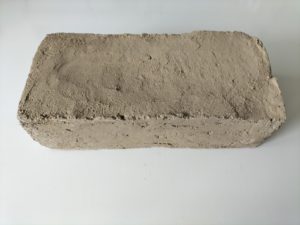
Compressed Earth Brick
Use:
Structural wall or infill.
Features:
Compressed earth brick is an environmentally friendly and sustainable material made from pure clay. It is dense and resistant to compression and can be used as a load-bearing or infill wall. Its stabilization with lime prevents moisture build-up and swelling. Also, in addition to acoustical insulation, CEB has excellent thermal features: thanks to its inertia, it can store heat and release it later while helping regulate ambient humidity at the same time.
Manufacturer:
ARGILUS
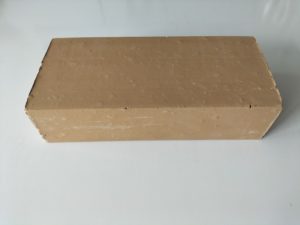
Terracota Tiles
Use:
Cladding.
Features:
The terracotta tile is an entirely mineral material made with clay and sand. The raw materials come from quarries. The combustion of the mineral mix ensures resistance to weathering and mold. The lifespan of the tile can exceed 100 years which makes it a material that can be reused at the end of its life on other buildings if the fixing system initially used allows its deconstruction without degradation.
Manufacturer :
RAIRIES MONTRIEUX
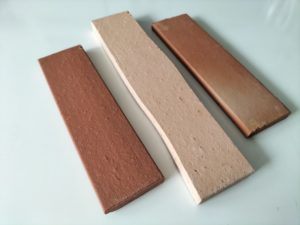
Bamboo
Use:
Interior and exterior flooring, cladding, plywood board.
Features:
Resulting from a recomposition of natural bamboo, bamboo boards keep the natural features of the original material. Bamboo is very resistant to humidity: it contracts and swells less than most of solid wood species, which gives a stability to the building.
Bamboo is also an abundant resource and grows very fast: up to one meter per day. Each year, poles between 4 and 5 years old are harvested, which allows younger bamboos to mature. During growth, it absorbs a bigger amount of CO2 than that generated during the production process. For these reasons it is considered to be a sustainable material.
Manufacturer :
MOSO
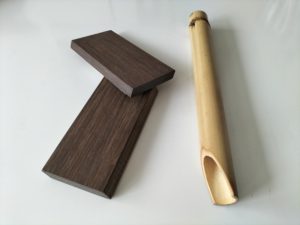
Burnt Wood
Use:
Cladding.
Features:
Burnt wood results from a wood protection technique that consists of deeply burning of a wood board to obtain a thick carbon layer on the surface giving an infinite variation in appearance and texture.
In addition to offering natural UV protection and moisture resistance, this technique prevents the growth of insects and fungi and significantly delays the spread of fire.
Manufacturer :
NOIR DE BOIS
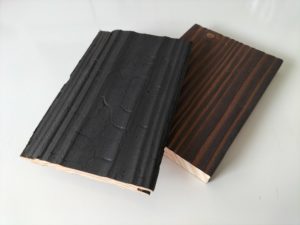
Cork Board
Use:
Thermal and acoustical insulation.
Features:
Cork is a natural material. Its fabrication in form of boards does not require any polymer. Boards can be obtained by recycling of cork plugs. Expanded cork is an excellent thermal and acoustic insulation with a good resistance to water and humidity. Like every bio-based insulation materials, it is a breathing material that is suitable for ancient building renovation. For all these qualities, its price is quite high compared to other materials on the market.
Manufacturer :
WEBER
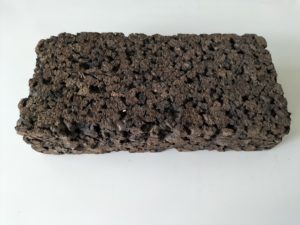
Composite Wood with Integrated Aluminium
Use:
Cladding ( Potentially structural)
Features:
Composite wood is made from wood flour mixed with plastic resin. This hybrid system minimizes the carbon footprint. The production of the material complies with high ecological standards. The wood used is made from recycled pine, which is good for the environment. Even after decades in the sun, the decking boards can easily be reused.
Naturally resistant to water, insects, rot and frost. The planks do not require any additional treatment, such as brushing, painting or impregnation. This makes it sometimes more durable than natural wood construction.
Manufacturer :
LAMEO
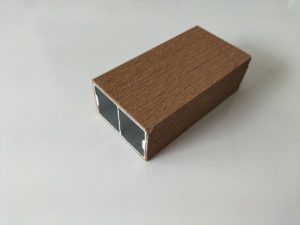
Wood Wool
Use:
Thermal and acoustical insulation
Features:
Wood wool panel can be flexible, rigid or semi rigid. Its manufacture allows the valuation of of sawdust from sawmill waste. Wood wool is a high-performance thermal and acoustical insulator that offers good protection against summer heat.
These insulating panels have an advantageous carbon footprint, even though their manufacture requires binders and additives. Several manufacturers are now substituting these pollutants with natural and biodegradable products (e.g., starch, etc.)
Manufacturer :
STEICO
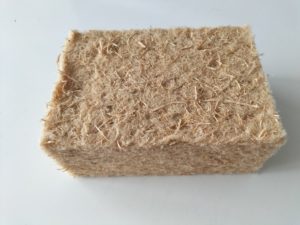
Acoustical Wood Panel
Use:
Acoustical covering : walls and ceilings
Features:
This wood acoustical panel is a composite material made of three laminated plies with spruce laths on the outside and wood fibers for sound absorption on the inside. This material combines sound absorption with a wood finish for sound comfort and aesthetic quality of interior spaces.
Manufacturer :
LIGNOTREND
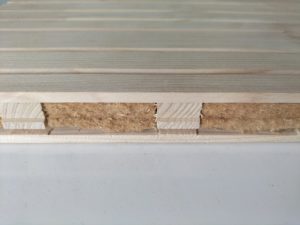
Acoustical False Ceiling
Use:
Ceiling, acoustical insulation.
Features:
This bio based false ceiling is made from spruce wood wool. It is stabilized during a mineralization process using a binder made of cement and lime. It is an excellent acoustical insulation material thanks to its technical properties. The panel does not require any extra finishes for the natural visual aspects given by the fibers.
Manufacturer :
KNAUF – gamme ORGANIC MINERAL
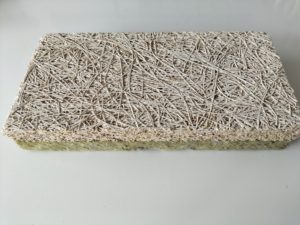
Lightweight Hemp Concrete
Use:
Insulation, infill.
Features:
The lightweight hemp concrete is a composite material made of hemp chips and Prokalk lime (mix of air and hydraulic lime). It is used internal and external insulation of existing buildings .
Hempcrete is also used as infill for wood framed structures in new construction. Its composition gives it excellent thermal,acoustical and hygrometric insulation features.
Manufacturer :
ISOHEMP
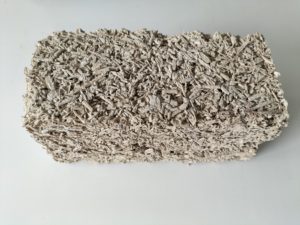
Natural Rubber
Use:
Floor covering.
Features:
A material made entirely from natural and industrialized rubber often mixed with natural minerals, color pigments and other components. The mixture is then cut and flattened under very high heat and pressure. The final product is a uniform, water-resistant and durable product.
Manufacturer :
NORA
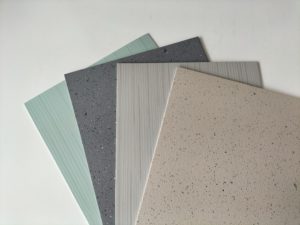
Linoleum
Use:
Floor and wall covering
Features:
Commonly used to designate a floor covering made of plastic materials, the term „lino“ is generally synonymous with „chemical“ in the common sense. However, linoleum is an environmentally friendly flooring due to its composition. Indeed, made with from chalk, resin, natural pigments, jute, wood powder, cork bark and linseed oil, linoleum proves to be a natural and environmentally friendly product, compared to other polymers like PVC.
Manufacturer :
GERFLOR
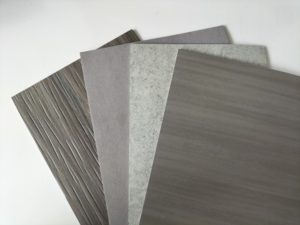
Cellulose Wadding
Use:
Thermal and acoustical insulation
Features:
Cellulose wadding is made from primary bio-based raw material produced from recycled papers and cardboards. It is an excellent insulation material and has a lifespan of up to 20 years. Papers and cardboards are crushed, their fibres removed and then mixed with boron salt
Textile fibres are sometimes added to the mix. Most of the time cellulose wadding is sold as bulk fibres for blow molding, or spraying, or sometimes as panels. Cellulose wadding has the advantage of being affordable compared to other natural insulation materials on the market. However, it is not resistant to water and cannot be put outside or in wet areas.
Manufacturer :
OUATECO
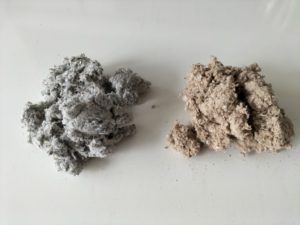
Recycled Polyurethane Foam
Use:
Acoustical insulation.
Features:
With its polymer composition, polyurethane is produced from petrochemical products. It is harmful for the environment and non biodegradable. However, polyurethane has excellent thermal performances when used as thin insulation material, which makes it a common material in the building sector. Its recycling as an acoustic insulation foam aims to reduce the impact on environmental contamination.
Manufacturer :
RECTICEL INSULATION – range: SILENTWALL
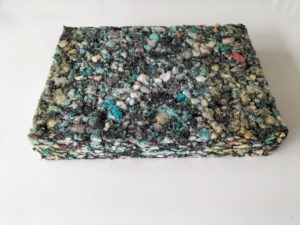
Recycled Textile Tiles
Use:
Acoustical insulation, interior wall covering.
Features:
Textile tiles are made from textile fibers originating from industrial waste and recycled clothes. They often come with a heterogeneous aspect as the fibers are mixed randomly. In addition to their acoustical insulation properties, textile tiles are light weight and add an aesthetic touch to various types of spaces. However, they have low water and impact resistance properties and their maintenance is difficult.
Being “upcycled”and therefore expensive, textile tiles are intended for high-end interior spaces that have particular acoustical and aesthetic needs (offices, meeting rooms, hotels, restaurants, reception halls, private homes, etc.).
Manufacturer :
PIERRE PLUME
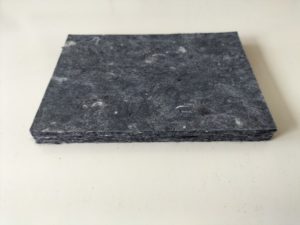
Draining floor
Use:
External floor coverings.
Features:
Used in the development of outdoor spaces (car parks, roads, cycle paths, etc.), draining floor coverings are made of mineral aggregates(often marble or quartz, preferred for their hardness) bound by a resin. The interstices created between the aggregates during the pouring process allow water to pass through in rainy weather, or to keep air circulating, thus guaranteeing the thermal regulation of the surface.
By varying the tone of the aggregates or the color of the resin, this flooring offers a variety of finishes and adds an aesthetic touch to outdoor spaces.
Manufacturer :
PROURBA

Solar Panel
Use:
Energy
Features:
The solar panel is a system that is able to capture solar energy and transform it into an electrical continuous current. The solar energy is part of sustainable energies.
Manufacturer :
DUALSUN
